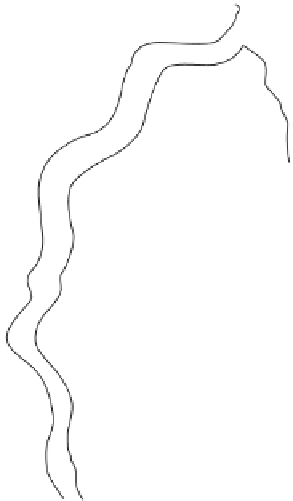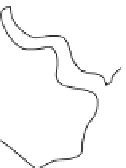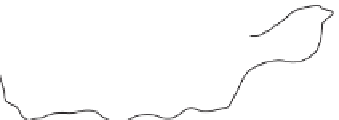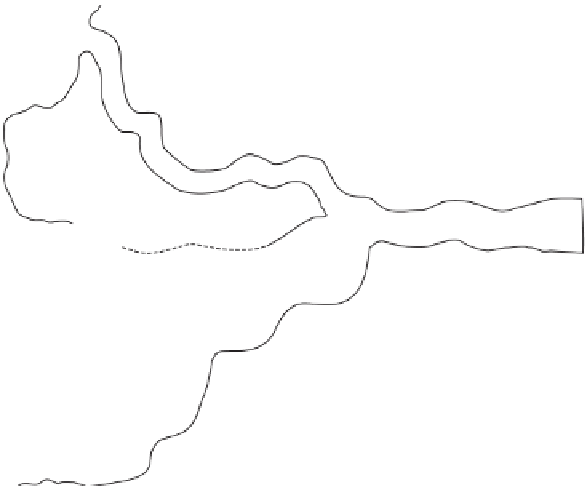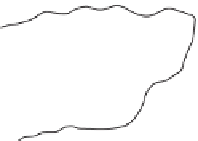Environmental Engineering Reference
In-Depth Information
Wolverhampton
Tubificids
Red chironomids
Ascellus
Leech
Molluses
Gammarus
Ephemerids
Caddis
Bescot
Saltley
Coleshill
Oldbury
Hockley Br.
Harborne
Bourne Br.
Dogpool
Greet
No animals
Animals rare
Animals common
Animals abundant
Northfield
Yardley
wood
Figure 13.3.
Sketch map of the Upper River Tame showing the extent of pollution
in 1945 and indicating the invertebrates recorded (from Butcher
1946
).
as a result of toxic effluents. '. . . it is only after dilution with Birmingham's
sewage effluents and the Rivers Blythe and Bourne that tubificids re-appear and
self-purification is re-established' (Hawkes
1956
). The Blythe was then, as now,
relatively clean with a mixed fishery and diverse invertebrate fauna (Hawkes
1975
) and the Anker was moderately polluted but retained a fish population.
The process of cleaning up the river began in earnest in 1923 (Spicer
1937
,
1950
). Indeed Spicer (
1937
) quoted a Trent Fishery Board Report of 1936, which
suggested that in the River Trent catchment, including the Tame, 'practically
all the sources of major pollution are under some control'. Given the recorded
